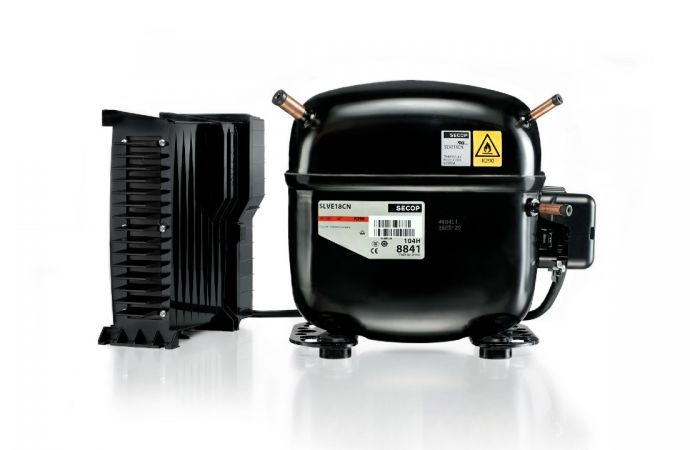Fraunhofer ISE has developed a heat pump based on propane that harnesses the natural refrigerant in a heat cycle.

Freiburg, Germany: home of the Fraunhofer Institute for Solar Energy Systems.
As part of the search for environmentally friendly alternatives to the HFCs being phased down under the EU F-Gas Regulation, the Fraunhofer Institute for Solar Energy Systems (Fraunhofer ISE) has developed a heat pump based on propane that harnesses the natural refrigerant in a heat cycle.
Heat pumps work in a similar way to fridges. In a fridge, the refrigerant absorbs heat from inside the fridge and transports it outside. “The difference is that heat left to escape freely from the back of a fridge is what a heat pump extracts […] to heat our homes or water,” says Fraunhofer ISE on its website.
Propane has an ozone-depleting potential of zero and a global-warming potential of three. Yet its high flammability poses challenges when used in a heat cycle.
“If you want to use propane, you have to keep the volume of refrigerant as low as possible to minimize the risks involved,” said Dr. Lena Schnabel, head of the department for heating and cooling technologies at Fraunhofer ISE.
Schnabel and her research team employed highly compact, brazed, finned heat exchangers – which function well with small volumes of liquid – to transfer the thermal energy from one flowing substance to the other.
“The liquid should completely vaporise or re-condense over the running length. To guarantee they operate efficiently, the vapour-liquid ratio must be identical in all the channels. Generally, that’s not easy to achieve, and it becomes especially tricky if you’re also trying to limit the volume of refrigerant,” Schnabel said.
To solve the problem, the research team developed a distributor with a bionic structure.
“Conventional Venturi distributors look like a pile of spaghetti made of many thin tubes that merge where they meet the vaporizer,” Schnabel explained.
“Our distributor is different: it has a continuously branching structure like the branches and twigs of a tree, which ensure even distribution of the refrigerant into the individual evaporator channels, even with a small volume of refrigerant,” she said.
Making optimal use of the heat exchanger surface in this manner improves efficiency.
If you want to use propane [in heat pumps], you have to keep the volume of refrigerant as low as possible to minimise the risks involved.”
– Dr. Lena Schnabel, Fraunhofer ISE
Specialised compressor
To reduce the risk of explosion when compressing the propane, the researchers used a specialised compressor encapsulating all ignition sources – taking care when connecting the individual heat pump components to prevent propane from escaping.
“We are currently modifying the technical design of the heat pump, testing the long-term behaviour of its components, and developing sustainable safety strategies,” said Schnabel.
Fraunhofer researchers contacted by this website revealed that the heat pump is for domestic heating applications with a capacity of up to 10 kW. They did not wish to disclose the propane charge.
Fraunhofer ISE, based in Freiburg, Germany, is part of the Fraunhofer-Gesellschaft (Fraunhofer Society). Headquartered in Munich, the Fraunhofer Society is a German research organisation with 69 research institutes across Germany. Each focuses on a different field of applied science.
Related stories



